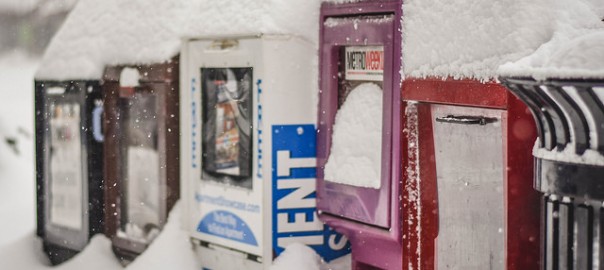We caught up in May with Eleanor Tutt of Carnegie Library of Pittsburgh, who also has funding from IMLS to work on data but with a focus on citizen engagement with data. Here’s an excerpt from a blog post outlining some of their work:
Data seems to come up in all sorts of conversations these days, and they reach way beyond math class. For example, civic data—which includes information about our city and citizens—is a great way to engage with your community on a deeper level, and can be a powerful tool for change! Since civic data is about the people and places you see every day, it can be tough to notice. Based out of CLP-Main, the Civic Information Services team is helping to uncover and share the ways data fits into life at the Library and throughout Pittsburgh, and we have a lot of fun stuff in store.
The STEM Committee has been busy sowing the seeds for their Super Science Kits, and we just couldn’t wait to join them. Some of our favorite collaborations so far can be found in the Tree Kit. Two activities included in this kit feature data front and center: “Forest Logbook” and “Make a Tree Map.”
Have you ever kept a nature journal? Ever taken notes while walking in the woods? Surprise! You were actually collecting data. The “Forest Logbook” activity invites you to tame wild data with a pencil and paper. While on a short nature walk around the library, kids will keep a close eye on the plants and animals they encounter, making notes as they go. Collecting nature data is especially exciting because we can measure anything from the size of a tree trunk to the furriness of a squirrel’s tail. And what fun would our data be if we couldn’t share it with friends? The group is encouraged to share and compare data with each other, which gives us the chance to spot similarities and differences. This activity serves as an easy introduction to observation and collaboration, both of which are crucial steps in data collection. While the trees are busy making oxygen outside, do you ever wonder what’s up with the air in your own home? You can check out one of our Speck Air Quality Monitors for some super practical data collection.
Pittsburghers are really lucky when it comes to data, because the Western Pennsylvania Regional Data Center gives us access to a bunch of cool civic information, from playgrounds to bus stops. The dataset we use for our “Make a Tree Map” activity was created by the City of Pittsburgh. Taking a close look at data and comparing it to what we see outside is an important part of data literacy, as we can use that step to determine why and how data is collected. After that, it’s time to create our own tree maps! Because we can create our map using characteristics from climbability to circumference, each one will be a totally unique look at the same set of data.
Sound fun? Read the rest of the post here. Also, here’s some trivia: at the time of his retirement, my great-uncle was the longest-serving employee at this library system, having spent over 40 years as a bookbinder.
Image: Pixabay.com (public domain)

